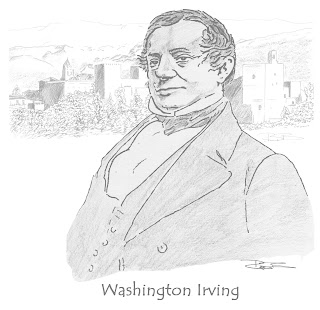Granada is a city in the autonomous region of Andalucía, situated at the foot of the Sierra Nevada. It is one of the great cities of Spain if not the World.
 |
| Alhambra Granada © Robert Bovington |
When visiting Granada it is tempting to spend all one's time admiring the Alhambra. From afar one can admire the beauty of its red walled parapets contrasting with the snow capped Sierra Nevada whilst once inside one can absorb oneself in the sheer splendour of its fantastic palaces and its tranquil gardens. However, Granada has much more to offer the visitor. It is a city where both Moorish and Christian history is visible in art and architecture.
Moorish Granada is exemplified by the UNESCO World Heritage Sites of the Alhambra, the Generalife and the Albaicín district whilst the Capilla Real and the Cathedral represent Christian Granada.
Alhambra and Generalife
The Alhambra is a museum of Islamic memories. It is essentially a number of palaces with extensive gardens surrounded by a fortress. There is much to see there including the Nazarite Royal Palaces that are interconnected via the Courtyards of the Myrtles and the Lions. Arabic-Granada art can be appreciated in many locations in the Alhambra as well as in the museums situated in the Renaissance Palace of Charles V that is also located within this spectacular complex.
 |
| Alhambra - Courtyard of the Myrtles |
There are numerous water features in the garden of the Generalife. However, this is not a common or garden estate - it is a summer retreat fit for kings - well sultans anyway! It was the summer residence of the sultans of Granada and consists of a palace surrounded by magnificent terraced gardens amidst avenues of cypress trees. Running water plays an important role in the Generalife with fountains and water jets.
Albaicín |
| Generalife © Robert Bovington |
The Albaicín district is an area of winding alleyways and narrow stairways clinging to the side of a hill. It is the ancient Arab quarter but nowadays it is a mix of Moorish and Christian monuments. The churches of San Salvador, San Bartolomé and San José have all been built on top of mosques. A number of small villas are to be found in the Albaicín called 'carmens' - modern versions of a type of Moorish residence comprising a house and its adjoining garden. Other Arab features in this quarter include the underground reservoirs, the Arab baths and the Moroccan shops selling traditional handicrafts. From various locations in the Albaicín there are fantastic views of the Alhambra and the Sierra Nevada.
The Sacromonte district contains thousands of caves that for more than 600 years have been inhabited by gitanos. It is the area to encounter impromptu flamenco at gypsy fiestas called zambras.
The Capilla Real or Royal Chapel is an impressive Gothic building that was built by Ferdinand and Isabella in 1504 as a mausoleum for themselves - they wanted to live forever in the last of the Arab kingdoms in Spain.
The Cathedral was built in 1523 on the site of the city's main mosque. Like the Capilla Real, its main objective was to unequivocally establish Christian rule in the last city in Spain to be occupied by the Moors.
 |
| Granada Cathedral © Robert Bovington |
There are many other places of note in the city including the Palace of the Córdobas, the church of San Pedro, the Renaissance convent of Santa Catalina de Zafra, the Royal Chancery, the Almanxarra Palace and the House-Museum of Manuel de Falla.
Manuel de Falla and Federico García Lorca
 |
| © Robert Bovington |
.
Over seventy years later, his home city of Granada has started to honour him. Granada's airport is called 'Aeropuerto Federico García Lorca'; postcards of the poet and his drawings are displayed alongside those of the Alhambra in the city's shops and kiosks and the tourist industry has jumped on the bandwagon by offering 'Lorca route' itineraries. Visits can be made to a number of sites in the area related to Lorca's life including Víznar near Granada, the site of his murder. Situated only a few miles from Granada is the House Museum of La Huerta de San Vicente, where the young Federico lived with his family.
.
.
There are very many more places to visit in this wonderful city and it would need a whole book to describe them all. In fact, the Alhambra itself has been the subject of a book - Washington Irving's famous 'Tales of the Alhambra' is an excellent account of the jewel in the crown that is Granada.
This article is an extract from “Spanish Impressions” by Robert Bovington
ISBN 978-1-4452-2543-2 available from:
http://www.lulu.com/spotlight/bobdotbovingtonatgmaildotcom
more blogs by Robert Bovington...
http://www.lulu.com/spotlight/bobdotbovingtonatgmaildotcom
more blogs by Robert Bovington...
"Photographs of Spain"
| |
"postcards from Spain"
| |
"you couldn't make it up!"
| |
"a grumpy old man in Spain"
| |
"bits and bobs"
| |
"Spanish Expressions"
| |
"Spanish Art"
| |
"Books About Spain"
|



No comments:
Post a Comment